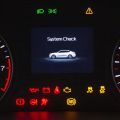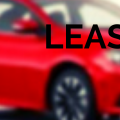5 Main Mistakes to Avoid When Leasing a Car

Leasing a car offers you access to a vehicle for a set number of kilometers and months. It's comparable to renting an apartment rather than purchasing a home. There is a less long-term commitment, but you must still pay for it.
The monthly cost of leasing a car is frequently lower than the monthly cost of purchasing it with an auto loan. Drivers save $126 on average per monthly payment. However, there are certain drawbacks to be aware of.
Leasing might cut your payments, but it can also be incredibly expensive if you don't read the fine print. If you opt to lease your next vehicle, avoid these five frequent blunders.
1. Paying too much money upfront
Car dealerships promote inexpensive monthly lease payments on new vehicles, but you may have to pay thousands of dollars upfront to get that low payment. This money will cover a portion of the lease payment in advance.
If the car is totaled or stolen within the first few months, your insurance company will reimburse the leasing company for the car's worth, but the money you paid in advance will most likely not be repaid to you. You'd be without a car, and the money you gave the leasing company would virtually vanish.
When leasing a car, it is advised that you spend no more than $2,000 up front. In some circumstances, putting nothing down and incorporating all of your fees into the monthly leasing payment may make sense. If something happens to the car before the end of the term, the leasing company will not receive a large portion of your money.
2. Not buying gap insurance
If you drive a leased vehicle, you must purchase gap insurance. The "gap" is the difference between what you still owe on your lease and the car's worth.
Assume your lease agreement indicates that you have the option to purchase the car at the end of the term for $13,000. If you total the car before the lease expires, your insurance provider will calculate the current market value and pay it to the dealership that owns the vehicle.
If the insurance company determines that the market value is just $9,000, you will almost certainly have to pay $4,000 out of pocket to cover the difference between the lease contract's residual value and the genuine market value - unless you have gap insurance. The difference will be covered by the gap coverage.
Gap insurance is commonly included in leases. The dealer may give you gap insurance, but you may be able to locate a cheaper policy with a standard insurance firm. Regardless, the coverage is well worth the low cost.
3. Underestimating how many miles you’ll put on a car
Know your driving habits before leasing a car to prevent extra charges. Consider your regular commute and how frequently you travel big distances. If you know you'll be driving more miles than the agreement permits, you might request a greater mileage limit. However, this will almost certainly raise your monthly payment because more miles will result in larger depreciation.
Annual mileage limits of 10,000, 12,000, or 15,000 miles are frequent in leasing contracts. If you go over those mileage limits, you may be penalized up to 30 cents per extra mile at the conclusion of the lease.
For example, if you exceed the mileage limit by 5,000 miles, you may owe an additional $1,500 — at 30 cents per mile — when you return the automobile at the conclusion of the lease.
4. Not maintaining the car
If your car has damage that exceeds normal wear and tear, you may be charged additional fees when you return it to the dealer.
Many businesses may consider a scratch on a car to be regular use and will not levy a penalty if the mark is less than the width of the edge of a driver's license or business card. If the leasing company deems the damage to be excessive, it may levy additional fees.
Normal use is defined differently by each dealer. Before you return the car, your lessor will inspect it for dents and scrapes on the body and wheels, damage to the windscreen and windows, excessive tire wear, and tears or stains in the inside upholstery. Don't expect your inspector to be forgiving.
5. Leasing a car for too long
Check if the lease time matches or is shorter than the car warranty period. Warranties vary by manufacturer, but they usually run three years or 36,000 miles, whichever comes first.
If you maintain the car for a period of time longer than the warranty period, you may need to consider purchasing an extended warranty. Otherwise, you may be obligated to pay for upkeep and repairs on a car you don't own while still making monthly lease payments.
According to Barbara Terry, a Texas-based automobile expert, and columnist, it's usually best to buy the car if you want to lease it for an extended period of time.
If the driver owns the automobile, he will have to pay for it and maintain it, but he will be able to drive it for several years without having to worry about a required monthly lease payment.
Use an auto lease calculator to see whether leasing or purchasing a vehicle will save you more money in the long run.
Other articles and publications:
Articles and publications of other companies:
- +1 (646) 270-9836
- Long Island City
- grantny.com












